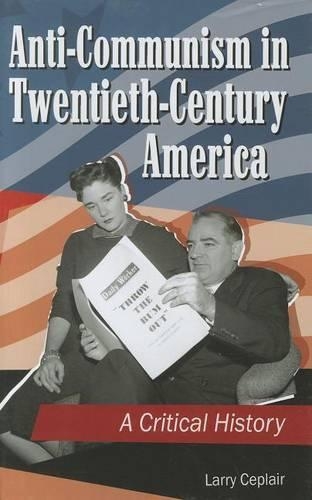
Anti-Communism in Twentieth-Century America: A Critical History
(Hardback)
Publishing Details
Anti-Communism in Twentieth-Century America: A Critical History
By (Author) Larry Ceplair
Bloomsbury Publishing PLC
Praeger Publishers Inc
5th October 2011
United States
Classifications
General
Non Fiction
973.91
Physical Properties
Hardback
384
Width 156mm, Height 235mm
907g
Description
This compelling, critical analysis of anti-communism illustrates the variety of anti-Communist styles and agendas, thereby making a persuasive case that the "threat" of domestic communism in Cold War America was vastly overblown. In the United States today, communism is an ideology or political movement that barely registers in the consciousness of our nation. Yet merely half a century ago, "communist" was a buzzword that every citizen in our nation was aware ofa term that connoted "traitor" and almost certainly a characterization that most Americans were afraid of. Anti-Communism in Twentieth-Century America: A Critical History provides a panoramic perspective of the types of anti-communists in the United States between 1919 and the collapse of the Soviet Union. It explains the causes and exceptional nature of anti-communism in the United States, and divides it into eight discrete categories. This title then thoroughly examines the words and deeds of the various anti-Communists in each of these categories during the three "Red Scares" in the past century. The work concludes with an unapologetic assessment of domestic anti-communism. This book allows readers to more fully comprehend what the anti-communists meant with their rhetoric, and grasp their impact on the United States during the 20th century and beyondfor example, how anti-communism has reappeared as anti-terrorism.
Reviews
Ceplair (emer., history, Santa Monica College) has written an engaging survey of anticommunism in the 20th-century US. . . . Summing Up: Highly recommended. * Choice *
Author Bio
Larry Ceplair is professor of history emeritus at Santa Monica College, CA.
